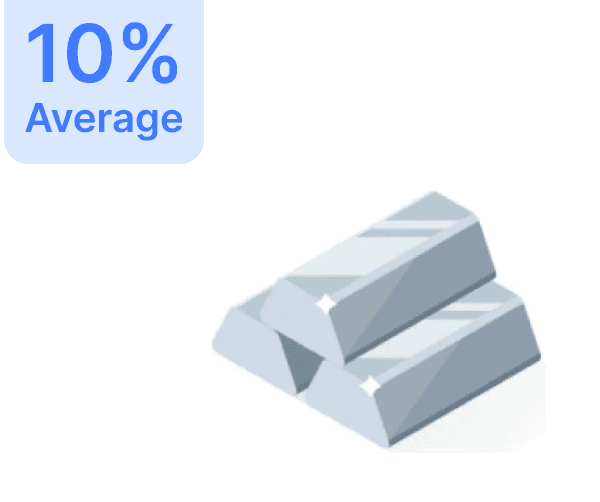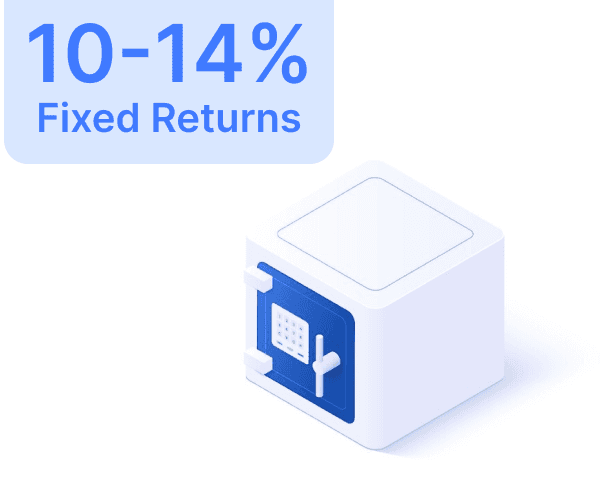
Trusted by 1L+ Indians
Want to Achieve any of the below Goals upto 80% faster?

Dream Home

Dream Wedding

Dream Car

Retirement

1st Crore


Dream Home

Dream Wedding

Dream Car

Retirement

1st Crore


Trusted by 1L+ Indians
Want to Achieve any of the below Goals upto 80% faster?

Dream Home

Dream Wedding

Dream Car

Retirement

1st Crore


Dream Home

Dream Wedding

Dream Car

Retirement

1st Crore


Trusted by 3 Crore+ Indians
Want to Achieve any of the below
Goals upto 80% faster?

Dream Home

Dream Wedding

Dream Car

Retirement

1st Crore

Trusted by 3 Crore+ Indians
Want to Achieve any of the below
Goals upto 80% faster?

Dream Home

Dream Wedding

Dream Car

Retirement

1st Crore

Trusted by 3 Crore+ Indians
Want to Achieve any of the below Goals upto 80% faster?

Dream Home

Dream Wedding

Dream Car

Retirement

1st Crore


Trusted by 3 Crore+ Indians
Want to Achieve any of the below Goals upto 80% faster?

Dream Home

Dream Wedding

Dream Car

Retirement

1st Crore

4 Tips for Creating a Strong Online Banking Password
4 Tips for Creating a Strong Online Banking Password




In an era where cybercrime is increasingly prevalent, it's estimated to cost businesses and individuals $10.5 trillion annually by 2025. Last year alone, over 1,000 data breaches were reported in the U.S., impacting more than 155.8 million people.
Financial institutions, including banks and credit unions, are frequent targets of cybercrime. For example, in 2019, a data breach at Capital One exposed over 100 million accounts in Canada and the U.S., compromising personal and financial information like names, birthdates, bank account numbers, Social Security numbers, email addresses, credit scores, balances, and mailing addresses.
Similarly, JPMorgan Chase experienced a data breach in 2014 that exposed up to 83 million accounts, revealing customers’ names, mailing addresses, phone numbers, and email addresses. In 2019, 62% of data leaks occurred within the financial services industry. Traditional antivirus software and firewalls aren't always foolproof.
Despite 90% of internet users worrying about their passwords being stolen, statistics show many aren't taking adequate measures to secure them:
More than half of individuals use passwords they've memorized.
51% of internet users use the same passwords for work and personal accounts.
"123456" is used by around 23 million people.
One-third of data breach victims stop doing business with the organizations responsible for the leaks.
The average password contains just eight characters or fewer.
As more consumers turn to mobile and online banking, the risk of financial data falling into the wrong hands increases. About 196.8 million Americans are expected to use digital banking in 2021. To safeguard personal and financial information, creating complex passwords is crucial.
Tips for Creating Strong Passwords for Online Banking
A strong password is your first line of defense against cybercrime. Although it may be tempting to use a simple, easy-to-remember password, doing so can be risky. Using longer phrases that include numbers, letters, and special characters enhances online banking security, making your data less vulnerable to hackers.
1. Use Memorable Phrases
Instead of combining one or two short words, use phrases or short sentences that contain letters, numbers, and symbols. Avoid using easily guessable information like your first or last name, street name, high school mascot, or favorite sports team.
For example, instead of using “Pizza123” as your password, use a phrase like “I really love pepperoni pizza” or “Pepperoni pizza is my favorite food.”
2. Combine Letters, Numbers, and Symbols
Make your password even stronger by replacing certain letters with similar-looking characters or numbers, such as “A” with “@” or “L” with “1.”
Instead of “IReallyLovePepperoniPizza,” use “1R3allyL0v3P3pp30n1P1zz@.” This phrase is easy to remember, but the inclusion of numbers and special characters makes it more complex and less susceptible to cybercriminals.
3. Test Your Password
Websites like Dashlane.com and passwordmeter.com can help you generate strong passwords that are effective against online hackers. If you’re worried about creating a password that's too difficult to remember or if you need to update your password regularly, consider using a password manager like LastPass.
4. Regularly Change Your Password
While cybersecurity experts have differing opinions on how often passwords should be changed, doing so can further safeguard your online banking accounts. Depending on its strength, a password should be updated every 3-6 months and immediately if it’s part of a recent data breach.
Additional Measures to Protect Online Banking Accounts
In addition to using strong passwords, consider these tips to enhance the security of your online banking accounts:
1. Use Multifactor Authentication
Ensure that your bank or credit union offers two-factor or multifactor authentication options, providing an extra layer of protection for your online banking accounts. Multifactor authentication might include security questions only you would know the answers to, or a code sent to your email or phone.
Use a strong password containing different letters, numbers, and special characters instead of just providing answers to security questions like "What was the name of the street you grew up on?" or "Where do you want to retire?"
2. Monitor Your Accounts Regularly
Regularly log into your online banking accounts and monitor your credit and debit card transactions to identify fraudulent charges or withdrawals promptly. Aim to check these accounts a few times a week.
3. Act Quickly if You Spot Suspicious Activity
If you suspect your financial information has been compromised, contact your bank or credit union immediately. This will allow them to place alerts on your accounts and freeze your credit or debit cards. Institutions like Texas Tech Credit Union enable members to report unauthorized financial activity through their app or website conveniently.
By following these tips and regularly updating your security practices, you can significantly reduce the risk of falling victim to cybercrime and ensure your financial information remains secure.
In an era where cybercrime is increasingly prevalent, it's estimated to cost businesses and individuals $10.5 trillion annually by 2025. Last year alone, over 1,000 data breaches were reported in the U.S., impacting more than 155.8 million people.
Financial institutions, including banks and credit unions, are frequent targets of cybercrime. For example, in 2019, a data breach at Capital One exposed over 100 million accounts in Canada and the U.S., compromising personal and financial information like names, birthdates, bank account numbers, Social Security numbers, email addresses, credit scores, balances, and mailing addresses.
Similarly, JPMorgan Chase experienced a data breach in 2014 that exposed up to 83 million accounts, revealing customers’ names, mailing addresses, phone numbers, and email addresses. In 2019, 62% of data leaks occurred within the financial services industry. Traditional antivirus software and firewalls aren't always foolproof.
Despite 90% of internet users worrying about their passwords being stolen, statistics show many aren't taking adequate measures to secure them:
More than half of individuals use passwords they've memorized.
51% of internet users use the same passwords for work and personal accounts.
"123456" is used by around 23 million people.
One-third of data breach victims stop doing business with the organizations responsible for the leaks.
The average password contains just eight characters or fewer.
As more consumers turn to mobile and online banking, the risk of financial data falling into the wrong hands increases. About 196.8 million Americans are expected to use digital banking in 2021. To safeguard personal and financial information, creating complex passwords is crucial.
Tips for Creating Strong Passwords for Online Banking
A strong password is your first line of defense against cybercrime. Although it may be tempting to use a simple, easy-to-remember password, doing so can be risky. Using longer phrases that include numbers, letters, and special characters enhances online banking security, making your data less vulnerable to hackers.
1. Use Memorable Phrases
Instead of combining one or two short words, use phrases or short sentences that contain letters, numbers, and symbols. Avoid using easily guessable information like your first or last name, street name, high school mascot, or favorite sports team.
For example, instead of using “Pizza123” as your password, use a phrase like “I really love pepperoni pizza” or “Pepperoni pizza is my favorite food.”
2. Combine Letters, Numbers, and Symbols
Make your password even stronger by replacing certain letters with similar-looking characters or numbers, such as “A” with “@” or “L” with “1.”
Instead of “IReallyLovePepperoniPizza,” use “1R3allyL0v3P3pp30n1P1zz@.” This phrase is easy to remember, but the inclusion of numbers and special characters makes it more complex and less susceptible to cybercriminals.
3. Test Your Password
Websites like Dashlane.com and passwordmeter.com can help you generate strong passwords that are effective against online hackers. If you’re worried about creating a password that's too difficult to remember or if you need to update your password regularly, consider using a password manager like LastPass.
4. Regularly Change Your Password
While cybersecurity experts have differing opinions on how often passwords should be changed, doing so can further safeguard your online banking accounts. Depending on its strength, a password should be updated every 3-6 months and immediately if it’s part of a recent data breach.
Additional Measures to Protect Online Banking Accounts
In addition to using strong passwords, consider these tips to enhance the security of your online banking accounts:
1. Use Multifactor Authentication
Ensure that your bank or credit union offers two-factor or multifactor authentication options, providing an extra layer of protection for your online banking accounts. Multifactor authentication might include security questions only you would know the answers to, or a code sent to your email or phone.
Use a strong password containing different letters, numbers, and special characters instead of just providing answers to security questions like "What was the name of the street you grew up on?" or "Where do you want to retire?"
2. Monitor Your Accounts Regularly
Regularly log into your online banking accounts and monitor your credit and debit card transactions to identify fraudulent charges or withdrawals promptly. Aim to check these accounts a few times a week.
3. Act Quickly if You Spot Suspicious Activity
If you suspect your financial information has been compromised, contact your bank or credit union immediately. This will allow them to place alerts on your accounts and freeze your credit or debit cards. Institutions like Texas Tech Credit Union enable members to report unauthorized financial activity through their app or website conveniently.
By following these tips and regularly updating your security practices, you can significantly reduce the risk of falling victim to cybercrime and ensure your financial information remains secure.
Author



Share with your friends
Help you friends in learning more about personal finance by share this blog.
Help you friends in learning
more about personal finance
by share this blog.
Help you friends in learning more about personal
finance by share this blog.
Silimar Blogs


Axis Bank Credit Card Net Banking
Axis Bank Credit Card Net Banking
August 5, 2024




PNB Fixed Deposit (FD) Interest Rates
PNB Fixed Deposit (FD) Interest Rates
August 5, 2024




Linking Aadhaar to Your Punjab National Bank Account
Linking Aadhaar to Your Punjab National Bank Account
August 5, 2024




PNB SIP Calculator
PNB SIP Calculator
August 5, 2024




How to Close a PNB Account Online & Offline?
How to Close a PNB Account Online & Offline?
August 5, 2024




TDS Refund - How to Claim TDS Refund
TDS Refund - How to Claim TDS Refund
August 5, 2024


View More
Download App
Explore More
Managing assets totalling over 1 crore+



